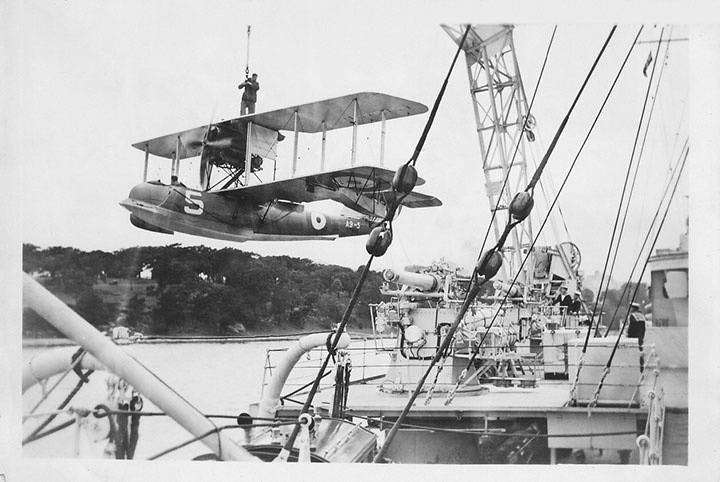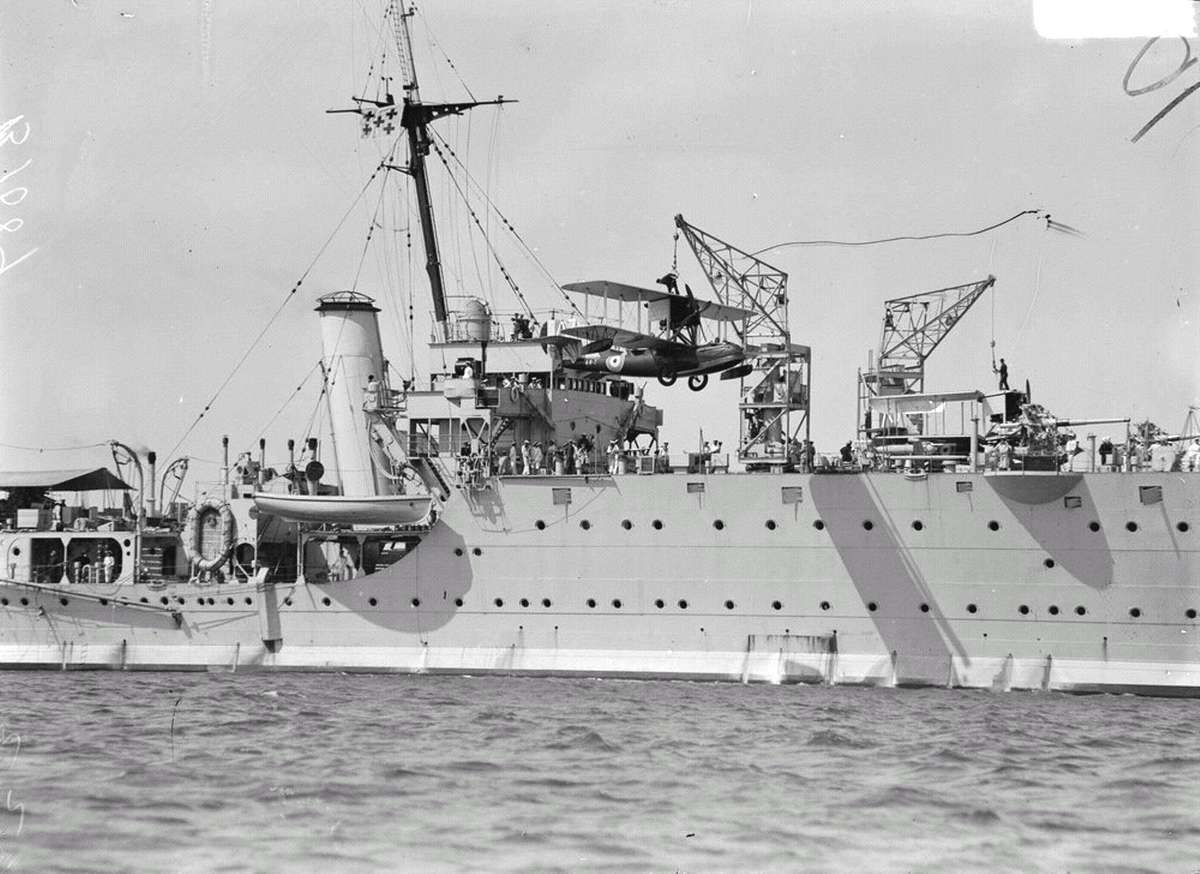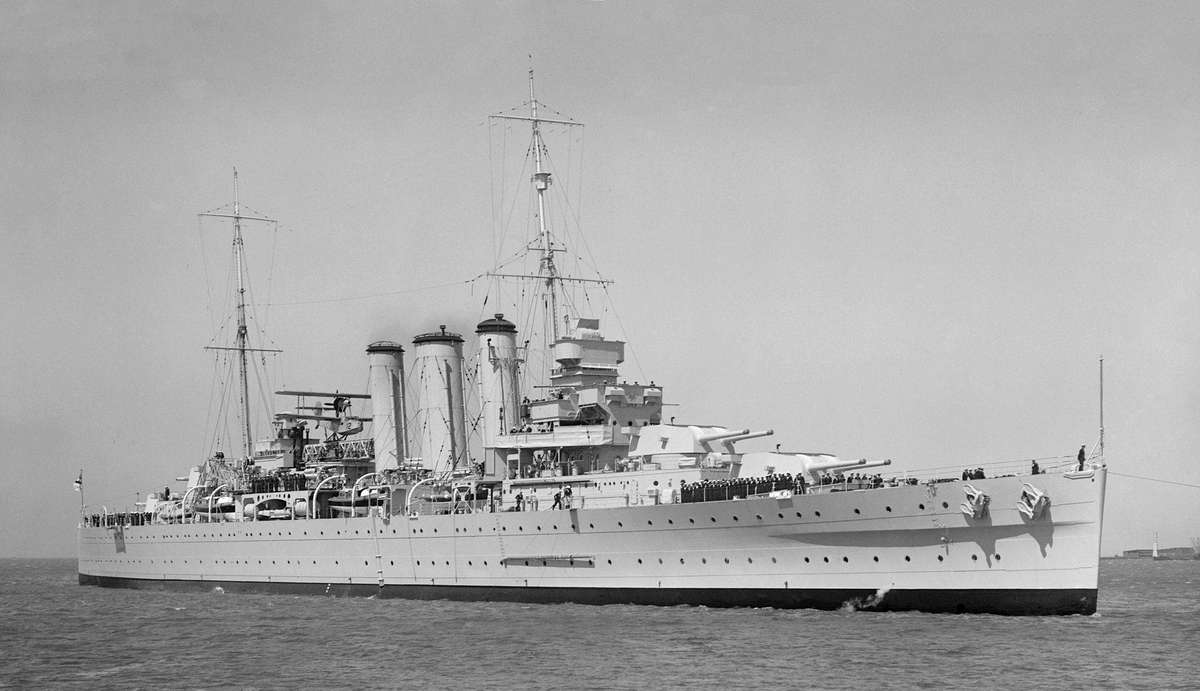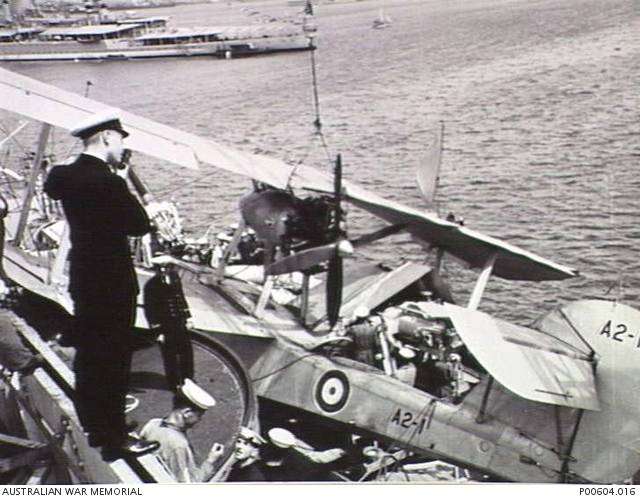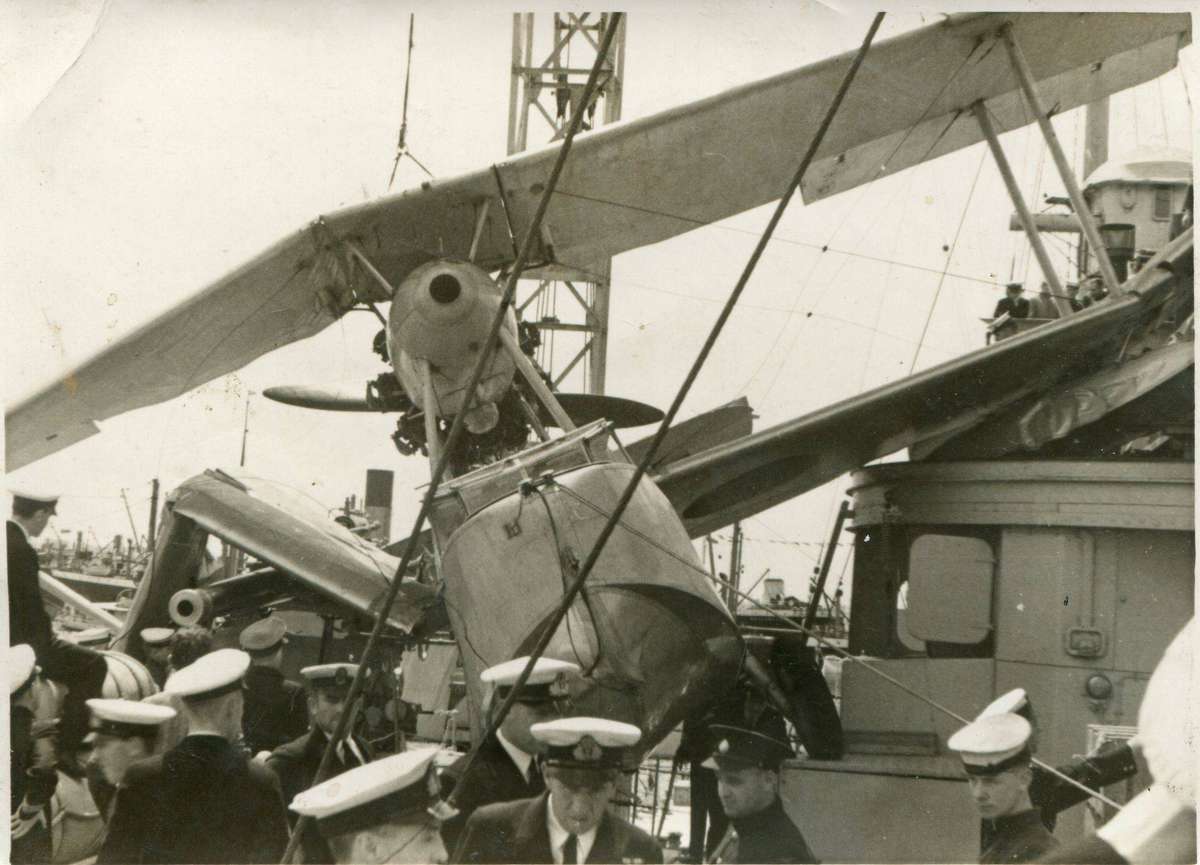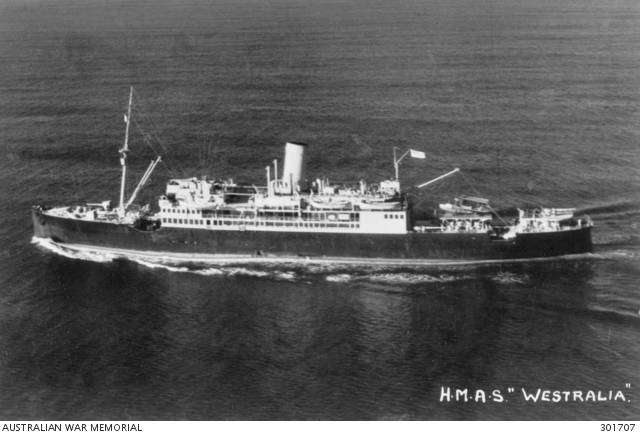Introduction
As early as 1913 the Royal Australian Navy (RAN) joined with the Australian Army Corps in establishing a joint air training facility at Point Cook, near Melbourne. The advantages of ship-borne aircraft were well understood, and included reconnaissance, gunnery spotting, anti-submarine surveillance, fleet defence and retaliation. The value of these roles were learned during WW1 when Royal Navy (RN) Sopwith aircraft operated from RAN cruisers.
In 1920, the Australian government assigned all air defence matters to the Royal Australian Air Force (RAAF). This disappointed the Naval Board, who considered a fleet air arm to be a necessary part of naval operations and essential to Australia’s defence, but it was not to be. Now the task ahead was for the RAN to work closely with the RAAF Fleet Cooperation Flight No 101, to develop aircraft operating procedures on RAN ships. The system adopted was the RAAF would provide the aircraft, pilots and maintainers and the RAN observers and telegraphists – and for a while the occasional pilot, too.
The deployment of the Supermarine Seagull 111 and V aircraft on RAN ships was a chapter in this early part of Naval Aviation’s History. They contributed not only to the force projection of the Navy, but also in building a foundation of knowledge and skill that served us well once more capable ships and aircraft became available. Kim Dunstan tells the story.
A bit about Seagulls
Built by Supermarine, the Seagull III was the Australian derivative of the Mk II, but modified for tropical use. Nine such aircraft were acquired, and their histories can be seen here. Built in 1925 they were largely constructed of wood and carried a crew of three in small, open cockpits set in the fuselage. They were armed with a single .303 Lewis gun.
In 1930 work was started on a flying boat of similar size and layout but predominantly built of metal. This became the Seagull V, and Australia bought 24 of them. They were not the ‘Walrus’ derivative, which featured relatively minor changes to the leading edge of the wing, engine mounts and wing folding mechanisms.
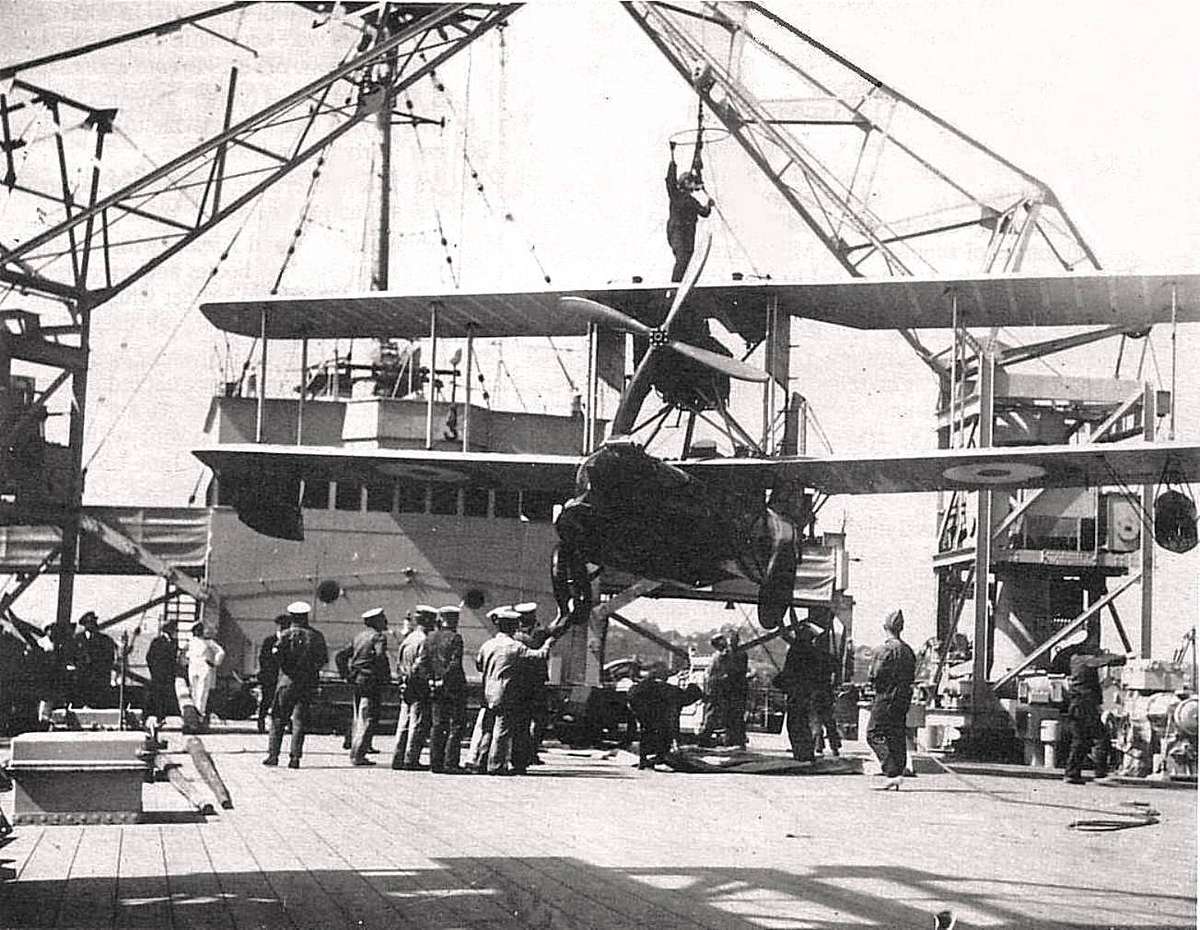 Above. This Seagull III is being gently lowered onto the deck of HMAS Albatross by one of the ship’s three cranes (RAN image).
Above. This Seagull III is being gently lowered onto the deck of HMAS Albatross by one of the ship’s three cranes (RAN image).
The Supermarine Seagull 111
The Seagull 111 was a biplane amphibian, first used by the Royal Navy in 1923 as a fleet spotter, operating from the flight deck of the aircraft carrier HMS Eagle. The Seagull had three open cockpits – for pilot, observer and telegraphist/gunner. It featured a tractor propeller driven by a 450 hp Napier Lion V engine, speed (max) 174 km/h (94 knots). The wood and fabric covered wings could fold back when stowed. The hull was wood with a timber frame and fabric covering. Watertight cells in the step aided buoyancy, and were easily repaired if an object in the water was hit. Following advice from the British Admiralty in 1925 the RAAF ordered six Supermarine Seagull 111 amphibians to serve on the new RAN seaplane carrier being built. In April 1926, the first of these arrived at Melbourne ready for assembly at Point Cook. In 1927 a further three were purchased from the RN FAA. The last Seagull 111 was withdrawn from service in 1936.
Left: HMAS Canberra’s crane lowers her Seagull 111 onto Sydney Harbour (RAN image). Centre: Jervis Bay was a popular place for exercises as the water was sheltered: here Seagull V A2-5 awaits a tow (AWM image). Right: Two Seagull 111’s with engines warming-up being lowered onto the water from HMAS Albatross (AWM image).
In April 1926 work began on the seaplane carrier HMAS Albatross at Cockatoo Dock, Sydney. Because work on the ship continued for another two years, aircrew training for the Seagull 111 took place at Point Cook. On 23 August 1926, three Seagulls were transferred to Bowen on the Queensland coast, to assist HMAS Moresby survey the Great Barrier Reef. Meanwhile, aircrew training continued apace, with a seaplane base on Sydney Harbour being considered.
The Seagull 111s worked on the GBR survey from August 1926 until early 1929, gathering technical and photographic evidence on reef locations and identifying safe shipping lanes. At Bowen the amphibians were housed in a beachfront hangar – taxiing to and from the water to take off and return. Flights would last up to four hours and extend up to 100 km from the coast. Rendezvous with HMAS Moresby were made in sheltered waters and the Seagulls would alight on calm waters near reefs when triangulation or sextant readings were needed. Overall, the Seagulls made a significant contribution to the GBR survey, with much useful experience gained.
HMAS Albatross seaplane carrier
Upon completion of the GBR task the Seagulls returned to Melbourne’s Port Phillip Bay where, on 26 February 1929, six Seagulls 111s were embarked on the newly commissioned HMAS Albatross for exercises during the work-up trials. As the Seagulls were not designed for catapult use the amphibians were hoisted to and from the water by the ship’s cranes. One of the drawbacks with the Seagulls was they needed a relatively calm sea state to operate from, which restricted their use. But the Seagulls proved useful in their reconnaissance and gunnery spotting (fall of shot) role. One exercise in Port Phillip Bay involved Albatross launching the Seagulls to make an early morning mock attack on Point Cook and Laverton aerodromes, with patrols over the RAAF bases to alert the fleet of retaliatory raids.
The Seagull’s Napier Lion engine proved reliable with few problems. But on take-off the front-mounted propeller sent volumes of spray over the open cockpits. This affected the radio equipment leading to failures and reduced range – critical on long distance searches – but eventually the radio problem was fixed. To overcome engine noise and the lack of an intercom – written messages were passed between the crew via a cigarette tin on a rope and pully system.
Below: A fine photograph of HMAS Albatross, hoisting a Seagull 111 onto the foredeck – the ship carried six aircraft but had room for nine (RAN image). Albatross was obsolete even before her time as she had no ‘through deck’ and the Seagull IIIs she carried were not really robust enough for their adopted role – but despite these setbacks both the ship and the aircraft provided valuable lessons in the operation of aircraft at sea. Her career was short, however, spanning only four years before the financial crisis of the early 30’s put her into Reserve Service from which she never emerged. See the full story of our first aircraft carrier here.
Seagull 111 doings
The sheltered waters of Jervis Bay, Hervey Bay and Southern Tasmania were ideal locations to operate the Seagull 111s. During a navigation exercise east of Tasmania and unaware of a wind change, a Seagull 111 ran out of fuel and was forced to alight on the sea, further complicated by radioing a wrong location. While Albatross searched in vain, by chance HMAS Canberra discovered the distressed Seagull, a remarkable coincidence as the ship was far from its normal route. Because Canberra did not have a crane to hoist the Seagull, and the fuel it provided failed to power the Seagull enough to take off, HMAS Anzac was called-in to tow the Seagull through a heavy swell, reaching Albatross half full of sea water.
The Seagulls were also used to search for an overdue Tasmanian fishing boat, which lasted several days. Luckily the fishermen were found safe ashore. Another job was flying up the rugged Prion River valley at treetop level, with steep hills either side, and two forestry officers aboard evaluating the timber. A more serious occasion was during a gunnery spotting exercise when the Seagull stalled, entering a spin it did not recover from, hitting the water killing the telegraphist and seriously injuring the pilot and observer. [See local newspaper cuttings about this accident here.]
During the early 1930s Albatross made regular cruises around the southern states, New Guinea and northern islands, often exercising with RAN ships. The Seagull 111s attracted much popular attention wherever they went. On one occasion, to the delight of everyone at Hervey Bay, the Seagulls conducted a low-level time-trial race, roaring around the RAN and HMNZ ships gathered in the bay. When Albatross was not at sea the Seagull 111s were at RAAF Richmond, near Sydney; the home base of No 101 Fleet Cooperation Flight.
Seagull 111 trials on HMAS Canberra and Australia
As the RAN’s aim was to equip its cruisers with seaplanes, the heavy cruisers HMAS Canberra and Australia were each assigned Seagull 111s for trials during the September 1931 and 1932 cruises to New Guinea and the Mandated Territories to the north. The Seagulls were engaged in various exercises; including coastal surveillance and inspecting island harbours for intelligence purposes. But, being hoisted to and from the water and exposed to the elements on deck took its toll. The Seagull 111s also had performance problems and were deemed unsuitable for the tropics; as the salt water and humidity seriously degraded the hull, airframe and control surfaces. However, the trials provided valuable information, and the experience helped to establish guidelines for the introduction of the new Supermarine Seagull V amphibians.
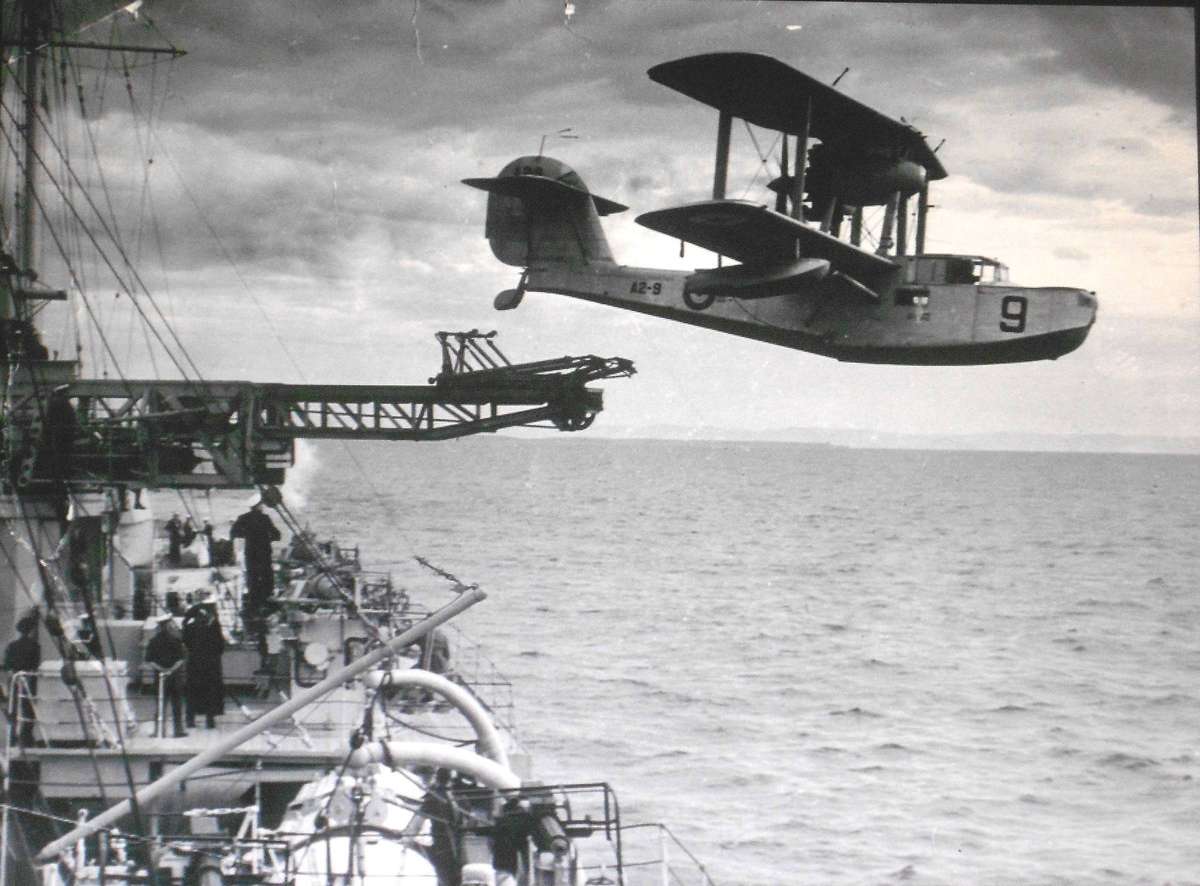
The Seagull V was a quantum leap forward from the Mk III. It was predominantly built of metal which made it far more robust for marine operations, including the ability to withstand catapult launches. The Bristol Pegasus engine gave substantially more power than the Seagull III’s Napier Lion, and the enclosed cockpit not only afforded a degree of comfort but protected onboard electronics and made crew communication much easier than the ‘note & pulley’ system necessary in its predecessor. Introduced in 1935 the Seagull V became the principal RAN ship-borne aircraft for the majority of WW2. You can see a detailed 1940 instructional video on how to launch and recover the aircraft here: Video
The 1930s: facing the challenges
The impact of the Great Depression reduced Australia’s defence budget, resulting in HMAS Albatross being placed in E Class reserve in April 1933, but she continued to serve as a base for seaplanes visiting Sydney Harbour. In 1936 HMAS Albatross was fitted with a catapult and tests were conducted using a Seagull V as the ship was expected to be recommissioned, but she remained in reserve. Then, in April 1938, Albatross was sold to the RN as part payment for the cruiser HMAS Hobart. By then the Seagull 111 had been superseded by the vastly improved Seagull V. The RAN’s plan now was to equip all heavy and light cruisers with a catapult and a Seagull V. By now the clouds of war were gathering and a sense of urgency had developed.
Seagull Vs & Walruses at war
Following the disposal of HMAS Albatross, the focus of the RAN was to establish the Seagull Vs on cruisers with the help of RAAF No 9 Fleet Cooperation Squadron. At the outbreak of war, in 1939, the heavy cruisers HMAS Australia (11) and Canberra (1) had a catapult and a Seagull V embarked; like-wise the cruisers Sydney (11) and Hobart (1). Meanwhile, HMAS Perth (1) was sailing to Australia, where her Seagull V and catapult were installed. HMAS Adelaide (1) due to her smaller size did not carry a seaplane. The Seagull Vs main role was reconnaissance and spotting for the ship’s guns After the declaration of war the armed merchant cruisers HMAS Manoora (1) and Westralia (1) both had a Seagull V embarked. These RAN ships and their aircraft served variously in the North Sea, Atlantic, Caribbean, West Africa, Mediterranean, Arabian Sea, Indian Ocean, South East Asian waters and Pacific Ocean. Below are examples of Seagull V and Walrus operations on those ships.
HMAS Australia (11)
In 1935, in the Mediterranean, HMAS Australia’s Seagull V was badly damaged when hoisting gear broke and it fell onto a gun emplacement, but was replaced by a Walrus on loan from the RN. In 1940, Australia did regular convoy duty in the Indian Ocean, then later in joint operations against French Dakar (West Africa) her Walrus was spotting fall of shot when it was shot down by two Vichy Curtis Hawk fighters, crashing into the sea with all crew lost. During a refit at Liverpool a German bomb landed nearby damaging her new Walrus. In 1941 when searching for the German cruiser Admiral Scheer near Madagascar in the Indian Ocean, Australia’s seaplane was badly damaged alighting in a swell. From 1942 to 1944 Australia served in the South West Pacific supporting the USN against Japan’s push southward, in the Battle of the Coral sea and elsewhere. During a refit in Sydney in 1944 her catapult and Walrus were removed, before re-joining USN forces in the Philippines.
Above: HMAS Australia in October 1937, with her Seagull V perched high in the superstructure (RAN image). The introduction of the catapult rail was a quantum move forward in air operations at sea. Right & Below: Seagull A2-1 was being hoisted aboard Australia in Alexandra harbour on 26 March 1936 when a new sling coupling broke, dropping the aircraft onto a 4″ gun emplacement (AWM & RAN images). Click on photographs to enlarge.
In 1940 while Canberra (1) was patrolling the Indian Ocean, she searched for the German armed merchant raider ’Atlantis’ which captured ‘Ole Jacobs’ and sank ‘Automedon’ in November 1940, On 20 November the raider ‘Pinguin’ sank the liner “Maimoa” and the freighter “Port Brisbane”. In both cases Canberra used her Seagull V in wide area searches for the raiders without success, before returning to Fremantle. Sailing near Africa Canberra used her Walrus while searching for the German cruiser Admiral Scheer. Operating with HMNZ Leander near the Chargos Archipelago, Canberra’s Walrus spotted the German ships ’Coburg’ and the tanker ‘Kelly Bovig’. Canberra shelled ‘Coburg;’ but the crew scuttled ’Kelly Bovig’, before it sank the Walrus pilot landed near the tanker and boarded it to confiscate papers, then reporting the tanker was beyond saving. More convoy work followed with frequent use of her seaplane. On 4 February escorting a convoy from Singapore Canberra launched her Seagull V to drop depth charges on a suspected Japanese submarine. In the Pacific with the USN, on 9 August 1942, Canberra was badly damaged in the Battle of Savo Island, sinking together with her Walrus.
HMAS Hobart (1)
Seagull V A2-23 was embarked on Hobart in November 1939 and was catapulted for night-flying exercises with the RN in the East Indies, but crashed into the sea due to darkness and pilot inexperience. This was replaced by Walrus 2171 on loan from the RAF at Singapore. When Italy entered the war on Germany’s side Hobart’s Walrus successfully bombed the Italian wireless station on Central Peak Island in the Red Sea, near Massawa, with good results. In August 1940, following a raid on RAF Berbera by Italian fighters, Hobart’s Walrus was sent to bomb the Italian fighters as they were refuelling, but the airfield was empty so the Walrus dropped its bombs on the buildings – later bullet holes were found in the lower wing. The ship’s log report of the attack can be seen here. During a Sydney refit in June 1941 Hobart’s aircraft and catapult were removed.
HMAS Perth (1)
In July 1940, during live firing exercises on Perth, gun blasts crumpled the wings of the ship’s Walrus. In December while escorting a convoy to the Middle East, Perth’s amphibian was landed at Aden for patrol work and again at Alexandria. When Perth joined the 7th Cruiser Squadron her Seagull V was landed at Suda Bay doing courier and patrol work. In 1941 at Heraklion airfield the Seagull V was damaged by machine gun fire, unfit for patrol duties it was flown to Alexandria and exchanged for a Walrus from the RN. On 28 April 1941, her Seagull V A2-17 encountered two German JU88 light bombers near Suda Bay. After a 20 minute dogfight the Seagull was brought down onto the water, with the crew rescued by HMS Havoc. The RAAF pilot said “…if it was one aircraft we would have got away, but when the starboard fuel tank caught fire it was all over and we crashed.” Perth continued in the Mediterranean, returning to Sydney for a refit in August 1941. After patrolling in the SW Pacific Perth joined the ABDA force, and on the night of 27 February 1942, outnumbered by the Japanese Navy in the Battle of the Java Sea; Walrus L2319 went down with HMAS Perth.
HMAS Sydney (11)
On 3 September 1939, when Prime Minister Menzies announced that Australia was at war, HMAS Sydney was based at Fremantle doing patrols and escort duties, including searching for the German cruiser Admiral Scheer in the Indian Ocean. Sydney’s Seagull V was in constant use conducting surveillance flights. On 11 June 1940 hostilities against Italy began and Sydney joined the 7th Cruiser Squadron in the Mediterranean. On 21 June 1940, Sydney’s Seagull V was spotting the fall of shot on Bardia. Suddenly fighter aircraft, first thought to be Italian (later identified as RAF) badly damaged the Seagull which managed to escape and crash land at Mersa Matruh, with all crew safe. A replacement Walrus, obtained at Alexandria, assisted with fall of shot at Scarpanato and continued patrolling for enemy vessels. In January 1941 Sydney departed the Mediterranean for Australia and in the Indian Ocean, at the Seychelles, searched in vain for an elusive German raider. After a refit at Sydney, she returned to the Indian Ocean to do more patrol work. On 19 November 1941, her Seagull was lost together with Sydney in a fight with the German raider ‘Kormoran’ off the coast of Western Australian.
HMAS Manoora (1) and Westralia (1)
Both ships were coastal passenger vessels and were requisitioned by the RAN when WW2 was declared. Fitted with guns they served as armed merchant cruisers (AMC), operating Seagull V and Walrus amphibians (no catapults) until 1942. The ships were then converted to landing ship infantry (LSI). Early in 1940 German merchant ships were sheltering in neutral Dutch East Indies ports. In April Manoora and Westralia, in international waters, used their aircraft to identify ships in Macassar attempting to breakout.
After Germany invaded Norway and Denmark, they escorted their ships to Australian ports; including Havor, Thodis, Hoagh Giant, Norden, Anders Jahre and Ole Jacob (scuttled) among others. The Seagull V aircraft were very helpful in the search for vessels, exceeding expectations, but were limited by weather and rough seas. The Italian ship Romolo almost escaped when a heavy swell prevented Manoora’s Seagull V from taking off; but later intercepted Romolo which was scuttled. Interestingly Manoora complained, saying their Seagull V only had a 600 hp engine that made it hard for the aircraft to get airborne, and urgently requesting a standard 775 hp Pegasus engine.
In the latter part of 1940 both ships patrolled northern Australian waters around the west coast to Fremantle, including escorting ships to Colombo. The search for raiders continued and in 1941 both ships were in the SW Pacific patrolling Ocean Island and Narau seeking German raiders active in the area. When Japan entered the war the aircraft were removed and the ships were refitted as landing ships. Both Manoora and Westralia, together with their Seagulls and Walrus aircraft, served with distinction.

Above: Seagull III A9-6 in Port Moresby circa 1930. This is one of the few photographs of a Seagull in the tropics and gives an interesting view of the early city. Image: AWM
Eyewitness Account
Read about the personal experiences of Eric Ford, an airframe technician who worked on Walruses aboard his ship the HMNZS ACHILLES. It provides a rare insight into how the aircraft were fuelled, catapaulted and recovered, and some of the difficulties these evolutions presented.
The end of an era
The Seagull Vs and Walrus aircraft on RAN cruisers in WW2 did important work. But as the war progressed the need for the amphibians was reduced as radar, aircraft-carrier and land-based aircraft took over. As the amphibians were vulnerable to damage and enemy attacks; together with the weight of the aircraft, catapults, crane, stores and fuel supplies, they became a liability. By February 1944 all Seagull/Walrus aircraft were removed from RAN ships. However, from June to November 1944, HMAS Warrego, acted as a tender for Walruses doing Air Sea Rescue work in PNG. The RAAF then disbanded No 9 Squadron on 31 December 1944. Many aircrew and maintainers were lost when Canberra (1), Perth (1) and Sydney (11) were sunk by enemy action, with two others killed in landing accidents. Five aircraft were lost in combat and four to accidents.
Towards a Fleet Air Arm
By 1944 the Australian government realised that an aircraft carrier was a necessary part of a modern naval force. With post-war planning underway a decision to equip the RAN with an aircraft carrier took shape. In 1945 Lt Cdr VAT Smith was sent to the UK to prepare a draft plan for a post-war RAN Fleet Air Arm, based on the British model. Towards the end of 1946 with the plan well advanced the Royal Navy was asked for assistance in developing the RAN’s Fleet Air Arm; including training and support services to provide commonality for joint operations. In July 1947 Commonwealth Defence Council approval was given for a Fleet Air Arm under the control of the RAN and in August cabinet approval was given for the purchase of two light-fleet carriers. In April 1948 King George VI approved the names HMAS Sydney (111) and Melbourne (11) for the carriers and Albatross for the RAN Air Station at Nowra.
References:
ADF Serials
RAN Sea Power History
Australian War Museum
National Archives of Australia
Trove: National Library of Australia
‘Seagulls Cruisers and Catapults’ by Ray Jones
‘Flying Stations’ ANAM
‘The Eagle and the Albatross’ by David Wilson UNSW
‘Wings Across the Sea’ by Ross Gillett
Wikipedia
HMAS Labuan (LST 3501) transported a Walrus to Heard Island in December 1947, which a few days after landing was destroyed in a storm. In 1980 the Walrus was recovered and is now on display at the RAAF Museum, Point Cook

